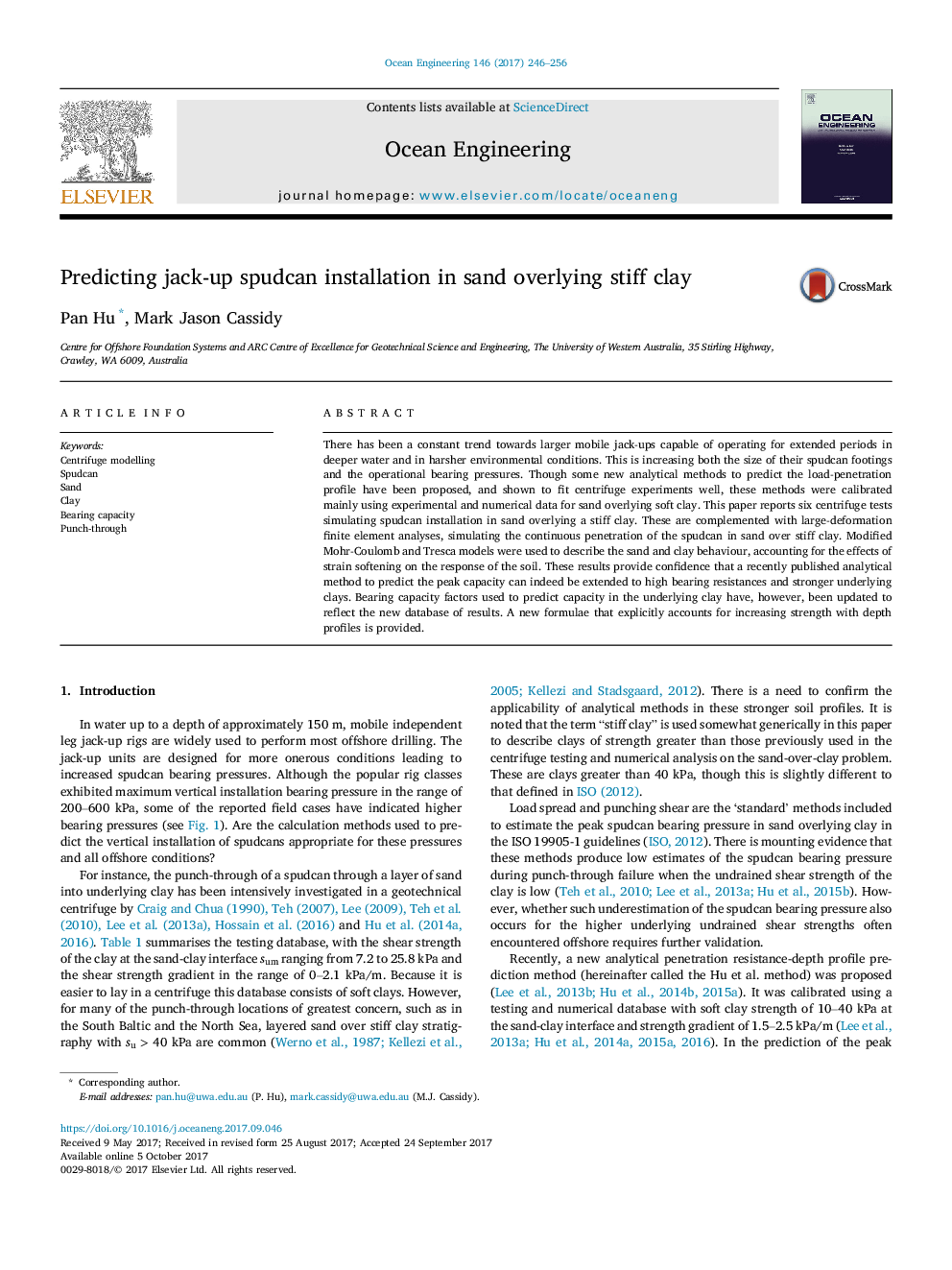| Article ID | Journal | Published Year | Pages | File Type |
|---|---|---|---|---|
| 5474067 | Ocean Engineering | 2017 | 11 Pages |
Abstract
There has been a constant trend towards larger mobile jack-ups capable of operating for extended periods in deeper water and in harsher environmental conditions. This is increasing both the size of their spudcan footings and the operational bearing pressures. Though some new analytical methods to predict the load-penetration profile have been proposed, and shown to fit centrifuge experiments well, these methods were calibrated mainly using experimental and numerical data for sand overlying soft clay. This paper reports six centrifuge tests simulating spudcan installation in sand overlying a stiff clay. These are complemented with large-deformation finite element analyses, simulating the continuous penetration of the spudcan in sand over stiff clay. Modified Mohr-Coulomb and Tresca models were used to describe the sand and clay behaviour, accounting for the effects of strain softening on the response of the soil. These results provide confidence that a recently published analytical method to predict the peak capacity can indeed be extended to high bearing resistances and stronger underlying clays. Bearing capacity factors used to predict capacity in the underlying clay have, however, been updated to reflect the new database of results. A new formulae that explicitly accounts for increasing strength with depth profiles is provided.
Related Topics
Physical Sciences and Engineering
Engineering
Ocean Engineering
Authors
Pan Hu, Mark Jason Cassidy,
